The popularity of axolotls as aquarium pets is currently on the rise, so people are asking about their lifespan. Well, it’s always a fascinating & important thing to know about the lifespan of a pet you want to bring home.
Unlike most aquarium pets, the axolotl has an excellent lifespan that would be between 10–15 years in captivity. But that requires a lot of care & effort from the owner. This fragile & sensitive animal can turn dead quickly if dealt with in a bit of careless manner.
Apart from being beautiful, their long life makes them highly desirable aquarium pets for aquarium lovers. It’s not common for aquariums to go on for such a long time.
In this short blog post, I will reveal to you how long axolotls live as pets to give you the bigger picture of axolotls’ lifespan.
Axolotl lifespan: How long do they survive in Captivity?
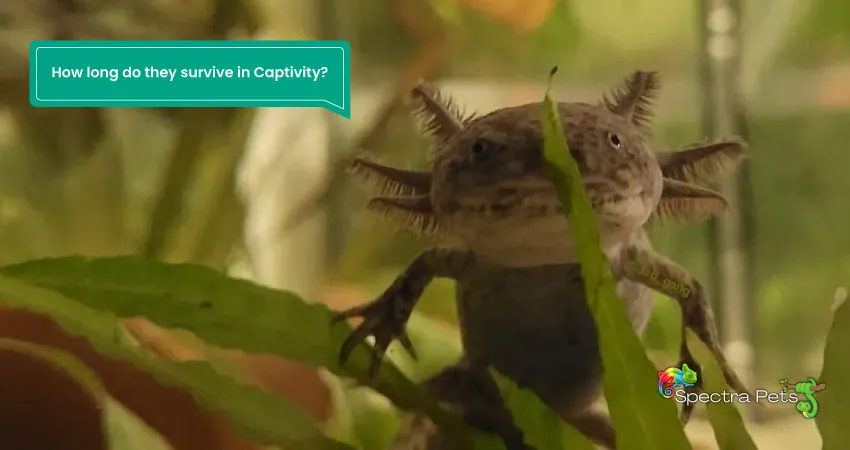
Axolotls living in captivity usually live between 10–15 years, with an average lifespan of 12 years. These cute animals will not have to face predators when they live in captivity, and they are able to live so long in captivity because of this one factor.
Adding to that, some ultra-caring owners will find their Mexican salamander living for 20 years. But that’s a pretty rare event because such a level of caring is hard to maintain for such a long time.
Though this blog is all about the captive axolotl’s life, you can gather a bit of information below about their lifespan in the wild too.
Axolotl lifespan: How long do axolotls live in the WIld?
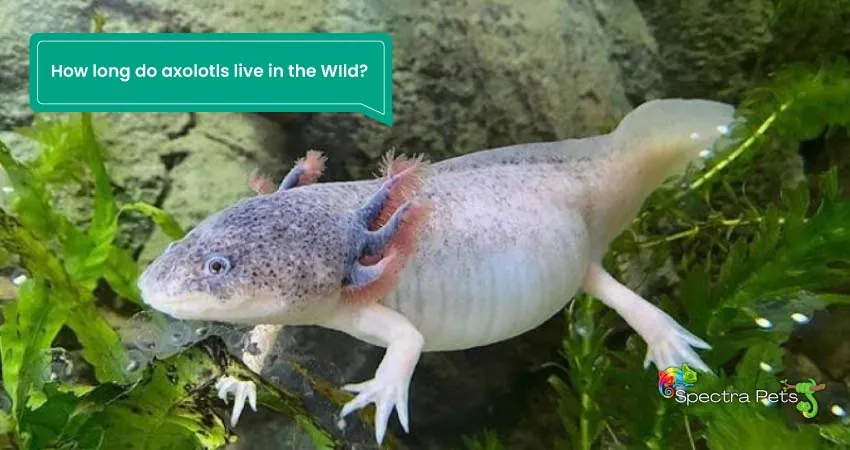
These pretty-looking creatures live about five to ten years in the wild. In their natural habitat, axolotls seldom live more than ten years due to a large number of predators.
Moreover, their physical shape does not make them fast swimmers. And, since they don’t have effective defense mechanisms against their hunters, they do not live long in the forest.
Are axolotls endangered?
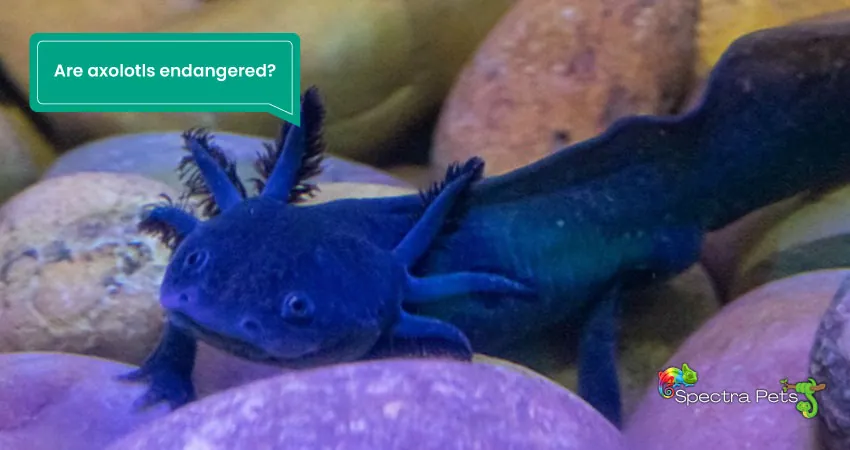
Yes, axolotls are critically endangered animals that have less than 2000 of them living in their natural habitat. You will only find them in Lake Xochimilco.
Versatile reasons like water pollution, invasive species, overfishing, and natural habitat loss put them on the list of one of the critically endangered species, unfortunately.
What is the life cycle of axolotl?
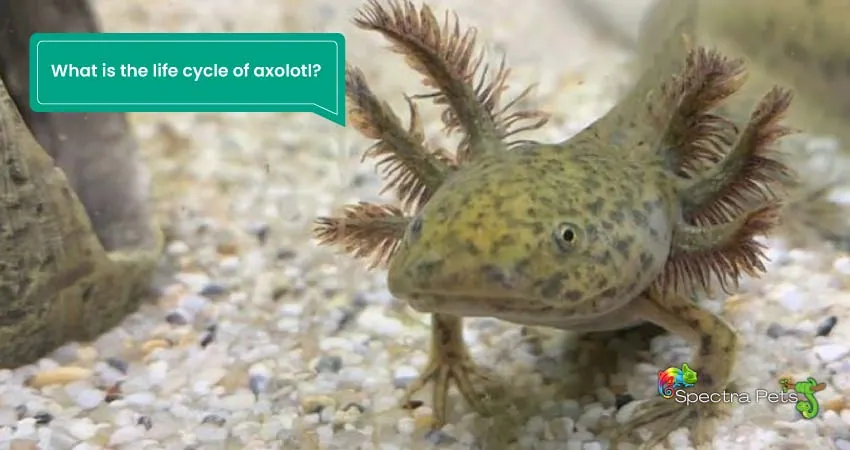
These spectacular creatures start their breeding process at the beginning of spring and continue until mid-summer. From egg form to full adulthood, they go through 6 stages and these are egg stage, embryo form, larva without any leg, larva stage with legs, juvenile stage, and adult stage.
Moreover, the whole lifecycle of an axolotl happens underwater. They never get out of the water willingly. If everything goes fine, they become sexually active in their young to adult transition period. This is the turning point of their life as they become fully solitary animals in this stage.
Does axolotl have regenerative abilities?
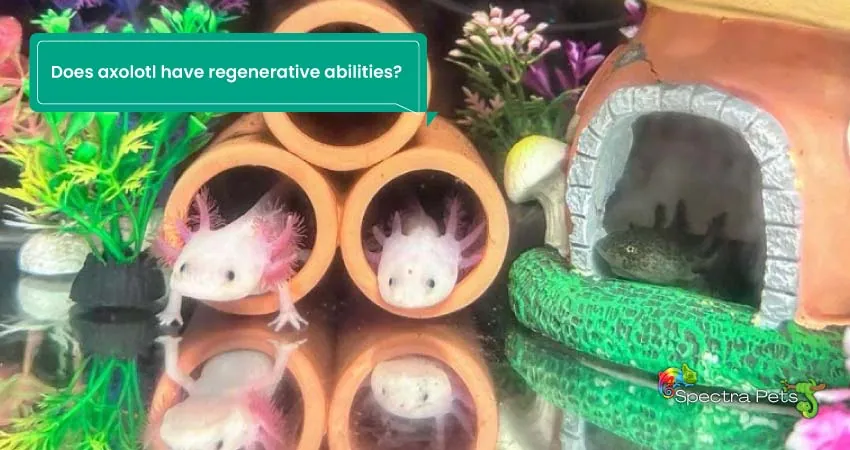
Luckily, the axolotls are able to grow certain body parts, like the heart, all limbs, lungs, and the brain. This gives them a long life compared to other amphibians, because they can grow more body parts.
Though they can regenerate many parts when they face extreme injury or cut on their head, they can’t regenerate it.
Factors that can affect axolotl longevity
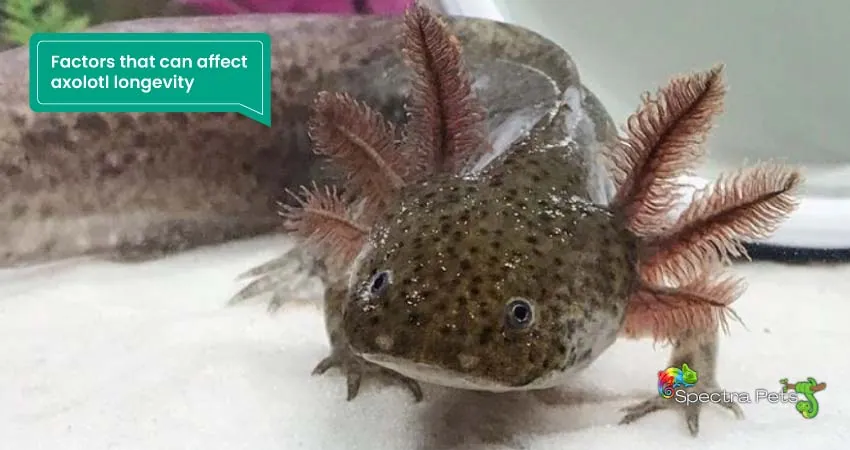
You as an Axolotl owner always have the chance to assure quality & healthy life for your aquarium buddy. There are versatile factors that add great value to their lives and increase the chance of a longer lifespan.
Let’s have a glimpse of those impactful factors.
1. Food & diet
In order to see your Axolotl live as long as possible, you should always provide them with the right amount of food. These cute-looking animals are protein lovers and they need a lot of that to stay healthy.
You have to ensure that these meat eaters are getting ample amounts of protein with every single meal. When it comes to food, you should add ghost shrimps, nightcrawlers, earthworms, insect larvae, daphnia, etc.
Along with that, you can give them raw or cooked lean chicken, beef, pork, etc which will serve as a protein booster. Also, you need to remember the food pattern would not be the same in their different life stages. Lack of food in the earlier stages will make your Axolotl a weaker one that stands less chance to survive long.
In order to keep your axolotl safe & sound, you need to ensure it’s free from bacteria or any sort of parasites. And in real life, it’s hard to track these unseen lives. So, if you go for frozen dry foods for these exotic pets, they most probably enjoy a much longer life.
2. Fresh & clean tank
As long as you will keep the tank top to bottom clean, it would directly help the Axolotl to live a healthy & long life. Any spike in the ammonia & nitrate levels can turn deadly for the pet.
Whenever your pet finds themselves stuck inside a dirty water tank, it immediately put immense stress on these little critters. Which can lead to organ failure if it goes unnoticed for a long time.
Elements like leftover food like pellets or chicken pieces, uncleared poop, and rotting organic decoration will turn clean water into dirty water. And such dirty water will create a lack of oxygen in the tank which will be extremely harmful to the axolotl’s body.
So cleaning the tank thoroughly and vacuuming it from A to Z once a month will ensure a healthy living tank. Along with that, changing the minimum of 25% water in the tank weekly will help to reduce the contaminants significantly.
3. Axolotl tubbing & fridging
Doing both this thing is a bit risky for beginners. So you need to do it without any mistakes if you want your cute axolotl to live long.
When your axolotl is stuck with any sickness or injury, you can help them with the fridging process. Put them inside a sealed container that is filled up with dechlorinated water. And put the container inside a refrigerator under 5-8 degree celsius for healing.
Tubbing is required in case of an incomplete cycle of the aquarium, fungus formation in the axolotl body, and for normal cleaning purposes. You have to complete the process carefully to ensure it stays in good health.
This process is simple, place the axolotl into a shallow dish, or inside a plastic tub. Make sure the dish or tub is loaded with cold & dechlorinated water.
4. Genetics
Good genetics is one of the strongest factors for a long-living Axolotl. The offspring of those parents that lived a long life most probably will survive more.
So while purchasing Mexican salamanders, you need to look at the profile of their parents. If you see it good enough then you can buy them & expect a long life.
5. Tank Setup
As an excited beginner, you must know that Axolotls are a sensitive species. So, you should make sure the tank setup feels to them almost close to their natural habitat. Here the equation is simple, a better tank setup means a happy axolotl that stays healthy.
The combination of filter, water cooler system, hiding places, plants, space, and substrates has to be so good that it becomes heaven for your pet.
When it comes to space, it has to be at least 20 gallons for an Axolotl. However if possible go for a bigger tank. A small tank with less amount of swimming place would create stress on the axolotl and that can make it unhealthy. As a result, it might not last long.
Also, keep avoiding putting sharper things like gravel as a substrate. Because it can be deadly for innocent animals as they can get bruises on the skin. They might end up eating one of the gravels.
Adding a smooth substrate layer, and keeping decorations that are not sharp would help the Axolotl to move freely. In addition to that, hiding places would help them to hide whenever they feel stressed. So, proper hiding places are extremely important for their long lifespan.
6. Right living conditions
To ensure the right climate for your axolotl, there must be a low level of light on the tank and an ample amount of dark hiding places. It would keep them stress-free.
Adding to that, all the water parameters should be on point. Any decrease or increase from the standard level would deteriorate the health of your exotic pet.
By nature, they prefer a slightly cooler temperature so the water temperature has to be within the 16-20 degrees celsius range for their optimum body growth. Also, the pH level should be within 6.5-8.
Moreover, both chlorine & ammonia levels should be 0 ppm. And the water hardness level has to be within 7-14 dGH. Another chemical known as Nitrate level must remain under 10 ppm inside the tank.
If you can successfully keep the water parameters to this standard level then you can expect your pet to spend many years ahead.
7. Minimum handling
If you find it tempting to touch your axolotl and do it frequently unnecessarily, your pet’s life would be in danger. Sometimes it’s unavoidable when it comes to cleaning the tank, or taking out one axolotl to another tank.
Due to their ultrasoft & permeable skin, they are fragile species. More handling can lead to losing a significant portion of the slime coat that protects them from bacteria & parasites. Even one of the limbs can break easily because they are too soft.
Though the limb can regrow, it would surely freak out for a specific time. Adding to that, when you take them out of the aquarium for a long time their slimy skin will turn dry and make it hard to breathe.
By ensuring minimal handling, you can be worry-free from giving them any sort of abrasion on their skin, reduce the chance of bacteria and parasites, and let them breathe freely. Which will give them a space to live a healthy long life.
8. Right tank mate
Axolotls are solitary creatures that don’t need any tankmates, but you may find it a bit boring to keep them alone in a tank. You are lucky that there are few species you can keep without any problem, but they can’t be fast movers, big size, territorial, or aggressive eaters.
Tank mates like guppy fish, same-size axolotls, white cloud minnow, zebra fish, snails, and cory catfish can be excellent choices for this purpose.
Keeping such species will make sure your axolotl gets a long life without having any extra attacks & pain from their tank mates.
Reasons for high Axolotl mortality
Axolotls are rare pets, and you don’t want to lose them early. But these fragile species can easily fall into death traps due to multiple reasons.
Here in the following, you will see the reasons, their symptoms, and how you can prevent them immediately, or before they get them.
| Name | Symptom | Prevention & Solution |
|---|---|---|
| Bacterial infection | Red patches on skin, Anal or gill bleeding, Loss of appetite, Fin & tail rot | Sulfonamide and Florenicol, Changing water frequently & maintaining healthy water parameters |
| Parasitic disease | Lead to appetite loss | Salt bath, Metronidazole with food, Formalin application for 8 hours, Avoid live foods |
| Fungus | White & fuzzy stuff on head, gills, and legs | Minfinn dosage, Black tea bath, Hydrogen peroxide application |
| Jumping out of the tank | No symptoms | Use a lid to prevent jumping out |
| Impaction | Stop eating at all | Avoid gravel or pebbles, Immediate vet action if ingested |
| Highly Stressed | Curled tail tip, Fast swimming, Floating, Air gulping, Losing external gills, Curled gills, Loss of appetite | Immediate action upon noticing symptoms, Change water ASAP, Regularly measure water parameters |
| Metabolic bone disease | Appetite loss, Slow movement, Slow regeneration due to lack of vitamin D | Include calcium-rich diet from the beginning |
Tips to help your axolotl live longer
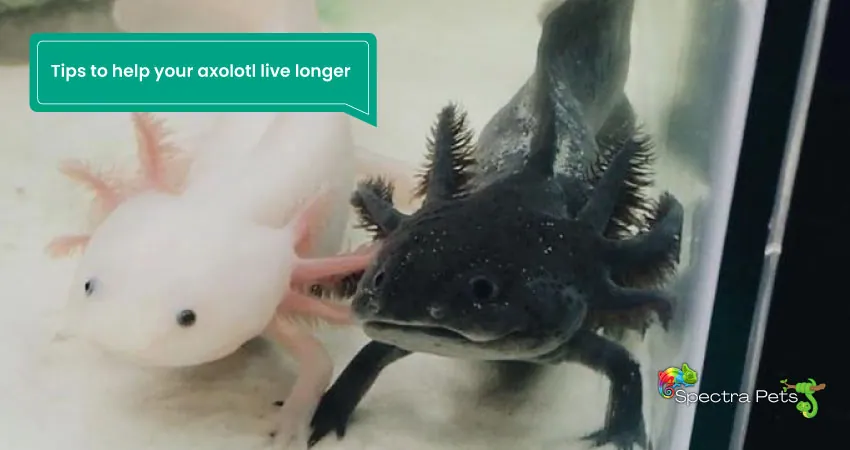
- Never introduce the axolotl before completing a full cycle of the tank. You must ensure to properly cycle the living tank to ensure the beneficial bacteria are working properly to keep the nitrogen cycle balanced. Which will make sure the water is clear for healthy living of axolotl.
- Though living foods are more favorable to them, they can carry parasites which can put your amphibian buddies’ lives at risk. Avoid giving them too many insects as food. Insects have a component called chitin which makes them hard to digest. Try to feed them fresh & frozen foods like different types of worms and shrimp.
- Frequently check the water parameter to keep your adorable pet stress-free. The moment you notice any drastic change in color or water clarity simply take immediate action to fix that.
- Keep the tank clean as much as possible. Avoid overcrowding the tank, which can create immense stress.
- Remove the axolotl poop every single day because they are bottom dwellers, so it would be harmful to them.
- Clean the filters thoroughly because if they get clogged the tank water will become dirty and the nitrogen cycle will be broken. Make sure to use a less powerful filter that creates fewer waves inside the tank.
- Every time you want to clean the tank or change the aquarium water, ensure to use a water conditioner. Because water conditioners will wipe out harmful chemicals from the tap water like chlorine and other toxic substances.
Final words
So far, you have a good idea of how long axolotls live as pets. The first and last thing that matters is love & proper care.
If you don’t show any lack of care for your captive axolotl, you will most probably find them the next 15 years living close to you.
Hope this article was able to give your query to the point.
